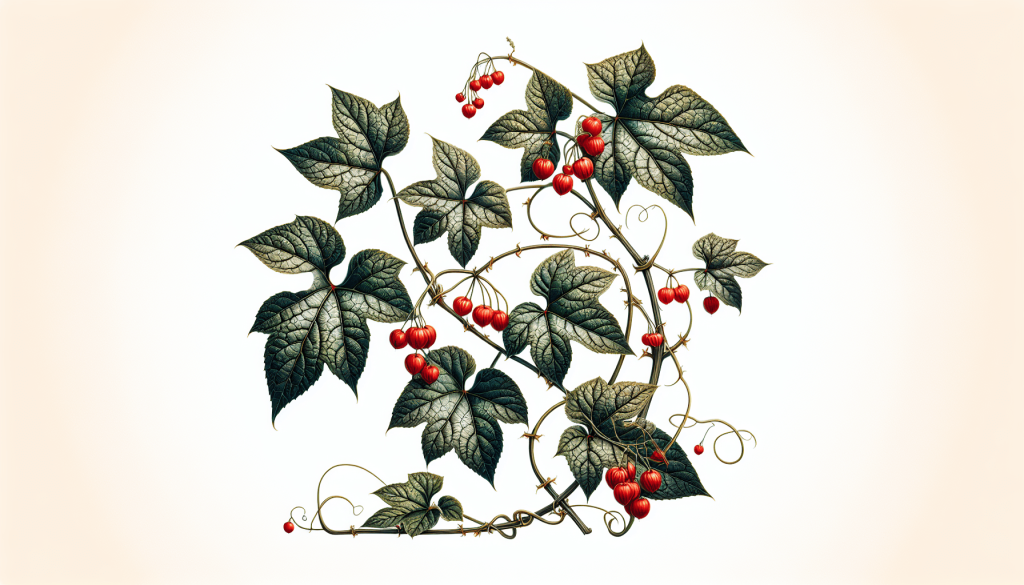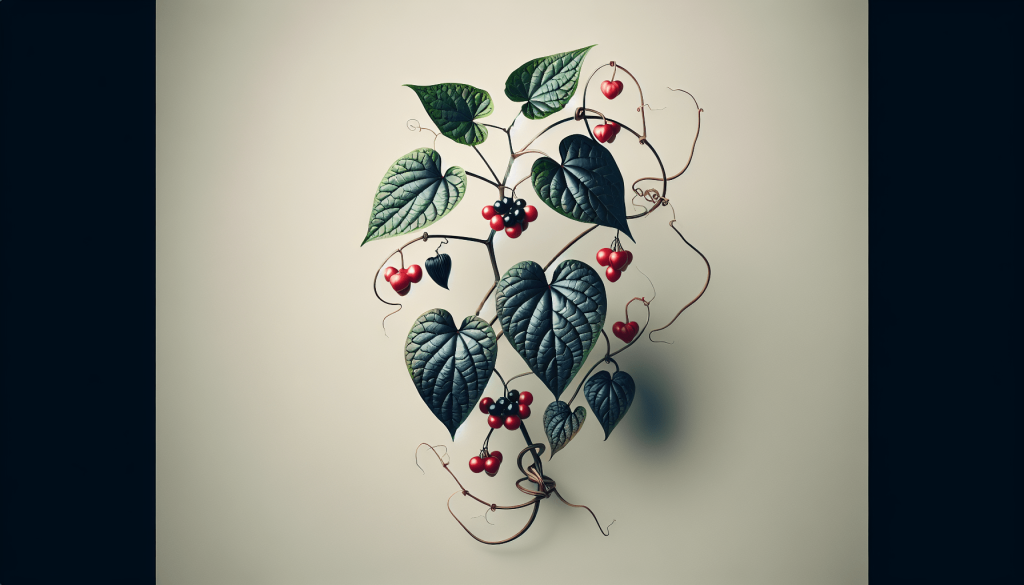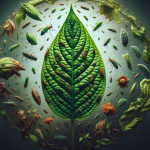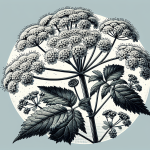This post may contain affiliate links. As an Amazon Associate, we may earn commissions from qualifying purchases.
Have you ever come across Black Bryony (Dioscorea communis) while exploring the beautiful landscapes of the United Kingdom or looking at plants in your local environment? This striking and often misunderstood plant holds a presence in the UK’s temperate climate, gracing various habitats with its unique appearance.
Understanding Black Bryony
Before delving into the specifics, let’s briefly touch upon what Black Bryony is. Black Bryony is a perennial vine native to Europe, including the UK. It’s renowned for its glossy, heart-shaped leaves and clusters of red berries, which stand out vividly in its natural habitat. Despite its beauty, it’s important to recognize that this plant is toxic, posing potential health risks to humans and animals if mishandled.
Botanical Characteristics
Black Bryony belongs to the Dioscoreaceae family and is scientifically referred to as Dioscorea communis. This twining vine can often be found weaving through hedgerows, woodlands, and scrublands. It can grow up to 3 meters in height and displays several noteworthy features:
-
Leaves: The leaves are broad, glossy, and heart-shaped, measuring 4-7 cm in length and 2-5 cm in width. They are alternate and possess a distinct, pointed tip.
-
Flowers: The plant produces small, inconspicuous greenish-yellow flowers between May and August. While not particularly showy, they play an essential role in its life cycle.
-
Berries: Perhaps the most striking feature is its berries. From late summer to autumn, clusters of bright red berries appear, which can be a focal point for those unfamiliar with the plant.
| Feature | Description |
|---|---|
| Leaves | Broad, glossy, heart-shaped |
| Flowers | Small, greenish-yellow |
| Berries | Bright red, clustered |
Habitats
Black Bryony thrives in a variety of habitats across the UK:
-
Hedgerows: This plant often weaves through hedgerows, benefiting from the structural support and partial shade.
-
Woodlands: It can be found on the edges of woodlands, utilizing the trellising effect of lower branches and shrubs.
-
Scrublands: It also inhabits scrublands, where it pioneers new growth areas by twining around other vegetation.
Understanding where Black Bryony thrives helps in identifying and managing its presence effectively.
Ecological Role
Despite its toxicity, Black Bryony plays a role in the ecosystem. Birds, particularly thrushes, consume the berries without ill effects, inadvertently dispersing the plant’s seeds. Additionally, the plant provides shelter and a climbing structure for various small animals and insects.
Potential Dangers and Toxicity
Recognizing the dangers associated with Black Bryony is essential for safely appreciating this plant. Each part of the plant contains toxic compounds, primarily steroid saponins, which can be harmful if ingested.
Health Risks
Humans:
- Ingesting any part of Black Bryony can lead to severe discomfort. Symptoms include vomiting, diarrhea, burning sensations in the throat, and even respiratory difficulty in severe cases.
Animals:
- Domesticated pets and grazing animals can be at risk. The ingestion can lead to symptoms similar to those in humans, including gastrointestinal distress and discomfort.
Handling and Safety Tips
To mitigate the risks, take the following precautions when dealing with Black Bryony:
-
Wear Gloves: Always wear gloves when handling the plant to avoid skin irritation.
-
Proper Disposal: Dispose of any plant material carefully, ensuring it is out of reach of children and pets.
-
Education: Inform others about the plant’s characteristics and potential dangers to spread awareness.
| Precaution | Description |
|---|---|
| Wear Gloves | Avoid skin contact to prevent irritation |
| Proper Disposal | Ensure safe disposal away from children and pets |
| Education | Spread awareness about the plant’s toxicity |

Identification Tips
Being able to identify Black Bryony correctly is crucial for both safety and appreciation of its beauty. Here are a few tips to help you:
Seasonal Identification
- Spring to Early Summer: Look for the heart-shaped leaves and early signs of small flowers.
- Late Summer to Autumn: The vibrant red berries become the most identifiable feature during this period.
Comparisons with Similar Plants
Black Bryony can be confused with several other climbing plants. Here are key differences to assist in proper identification:
| Plant | Key Differences |
|---|---|
| White Bryony (Bryonia dioica) | Tends to have more tendrils and white flowers |
| Honeysuckle (Lonicera spp.) | Distinctive tubular flowers, sweet fragrance |
| Bittersweet (Solanum dulcamara) | Purple flowers with yellow centers, fewer leaves |
Conservation Status and Management
Black Bryony is not currently listed as endangered or threatened. However, its management is essential due to the potential health risks and its invasive nature in some regions.
Role in Conservation
In the UK, conservation efforts are more focused on understanding the balance between preserving native flora and managing invasive species. Black Bryony, while native, can become overly abundant in certain areas, requiring careful monitoring.
Management Practices
To maintain an ecological balance:
-
Control Measures: Regular trimming and removal from non-native habitats help manage its spread.
-
Awareness Campaigns: Initiating awareness programs for landowners and gardeners helps reduce the risks associated with this plant.
-
Research: Investing in research to understand its ecological role and interactions with other species aids in creating effective management strategies.
| Management Practice | Description |
|---|---|
| Control Measures | Regular trimming and removal |
| Awareness Campaigns | Educate the public on identification and risks |
| Research | Study ecological role and interactions |

Myths and Folklore
Like many plants, Black Bryony is steeped in myths and folklore which have continued to fascinate people across generations.
Historical Uses
Historically, Black Bryony was used in various traditional remedies, despite its toxic properties. Knowledge about its toxic nature was often passed down orally to prevent accidental poisonings.
Folklore
Folklore often depicted Black Bryony in mystical terms, attributing magical properties to its striking berries and leaves. While fascinating, these stories also served a practical purpose—highlighting the need for caution around the plant.
Conclusion
Black Bryony (Dioscorea communis) is a plant that embodies the delicate balance between beauty and danger. Its distinct features make it an intriguing part of the UK’s diverse flora. However, recognizing its potential risks is vital for safety and enjoyment.
Awareness and proper management of Black Bryony can help you appreciate its role in our ecosystem while avoiding the health hazards it poses. By sharing knowledge and acting responsibly, you can contribute to a safer environment where both nature and people coexist harmoniously.
Quick Facts Recap
- Appearance: Heart-shaped leaves, greenish-yellow flowers, and bright red berries.
- Habitats: Hedgerows, woodlands, and scrublands.
- Toxicity: All parts of the plant are toxic if ingested by humans or animals.
- Ecological Role: Provides shelter and climbing structures for wildlife; seeds dispersed by birds.
Be curious, stay informed, and enjoy the wonders of nature safely!








